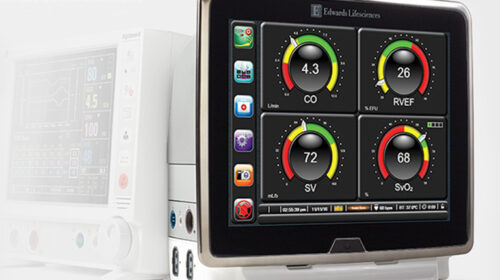Global CDSS Market to Reach $3.74 Billion by 2030
The global clinical decision support system CDSS market is projected to reach $3.74 billion by 2030,according to CRI’s new report. The study also highlights that the market is set to witness a CAGR of 6.70% between 2021 and 2030.
https://www.cri-report.com/product/global-clinical-decision-support-systems-cdss-market-analysis-and-forecast-2021-2030/
The CDSS is a type of software that aids in clinical decision-making by matching the characteristics of a patient with a knowledge base. This forms the basis of recommendations presented to a clinician. Modern CDSS are interoperable and are used at point-of-care. The medical professional can use the CDSS recommendations and combine their knowledge with the recommendations provided.
The clinical decision support systems of the future are expected to be developed to leverage data to make observations that are not interpretable by humans. Healthcare IT systems in the future are expected to leverage cutting-edge technology as an enabler to make clinical care more streamlined and accurate.
The comprehensive study of the global CDSS market extensively covers the following:
• Market numbers on CDSS type, product type, user interactivity, applications, delivery mode, model, and end-users, along with regional cross-segmentation by end users.
• More than 68 key offerings present in the market
• Impact on CDSS market due to COVID-19 and potential recovery scenarios
• Patent filing landscape
• Market share analysis for global CDSS market
• Detailed global and regional market share analysis, including the scrutiny of 15 countries.
Who should buy this report?
• CDSS vendors (software solutions and platforms) to gain a holistic view of the market potential of various solutions and the developing economies for business expansions
• New entrants looking to venture into the CDSS market to get insights into the different applications, technologies, and models which are expected to witness increased adoption in the future.
Besides these parameters, the study also encompasses the market growth drivers, opportunities, market restraining factors, competition mapping, segment analysis, and evidence-based analysis.
This report indicates that the growing emphasis on reducing medical errors as well as hospital readmission rates, rise in the number of chronic diseases, technological advancements in the field of information technology, and partnerships between CDSS vendors and cloud service providers are fueling the growth of the global CDSS market.
The study highlights the various emerging opportunities, such as integration of CDSS with blockchain, collaborations with precision medicine providers, business expansion in emerging markets with high demand for CDSS, which can be leveraged by players operating in the market.
To gain a holistic view of the market, data from different segments of the market has been analyzed minutely. These segments include CDSS type, product type, user interactivity, applications, delivery mode, model, end-users, and region.
The application segment of the global market includes analysis of different types of CDSS applications such as preventive care, diagnostics, follow-up management, and other applications.
To emphasize the impact of COVID-19 on the global CDSS market, “In the pre-COVID-19 scenario, the adoption of CDSS was mainly driven by the growing need to reduce medical errors. However, the COVID-19 pandemic has resulted in a significant increase in teleconsultations, remote monitoring, and AI integration in healthcare applications for expedited results. This ongoing transition is expected to enable a future of interoperability driven by AI and machine learning at the core. Moreover, the COVID-19 pandemic is anticipated to have a long-term impact on the market transition. CDSS adoption in emerging countries has been accelerated as a result of it.”
Key insights are drawn from in-depth interviews with the key opinion leaders of leading companies, market participants, and vendors. The key players profiled in the report include Allscripts Healthcare Solutions, Inc., Cerner Corporation, Change Healthcare, General Electric Company, International Business Machines Corporation, McKesson Corporation, RELX Group, Wolters Kluwer N.V., Epic Systems Corporation, Hearst Corporation, Inferscience, Inc., Medical Information Technology, Inc. (MEDITECH), Oncology Analytics, Inc., Persivia Inc., and VisualDx. In addition, the report also provides snapshots for three players, namely, CureMD Healthcare, RAMPmedical Henisaja GmbH, and The Medical Algorithms Company Limited.
How can market intelligence on CDSS add value to an organization’s decision-making process?
• Aid in product development
• Aid in understanding the regulatory scenario of the market in different regions
• Aid in understanding the patent trend of the market
• Help in targeting a segment for launching a new product
• Support in diversifying the portfolio
• Aid in understanding technology penetration in different healthcare applications
• Aid in understanding the end-user requirement
• Support in analyzing the market opportunities
• Provide insights on the key companies in the market
Insightful Questions Covered to Enable Companies to take Strategic Decisions
• How has COVID-19 impacted the adoption of CDSS as well as the market dynamics influencing it?
• What are the key regulations governing the CDSS market in key regions?
• What are the technological developments which are expected to have the maximum influence on the global CDSS market?
• Who are the leading players to hold significant dominance on the global CDSS market currently?
• What are the key business models being followed by the key players in the market?
• What are some of the major factors expected to influence the growth in the adoption of CDSS across the globe?
• What are the key strategies incorporated by leading players in the global CDSS market landscape?
• What is the current revenue contribution for the different types of CDSS, and what are the expected modifications in the forecast period?
• Which countries contribute to the major share of the current demand, and which ones hold significant scope for growth during the next 10 years?

